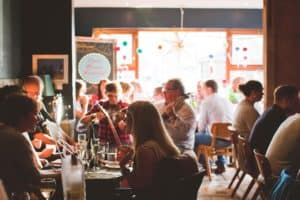Explore Irish Heritage Mosaic 101: Tell us Your Favourite Tale
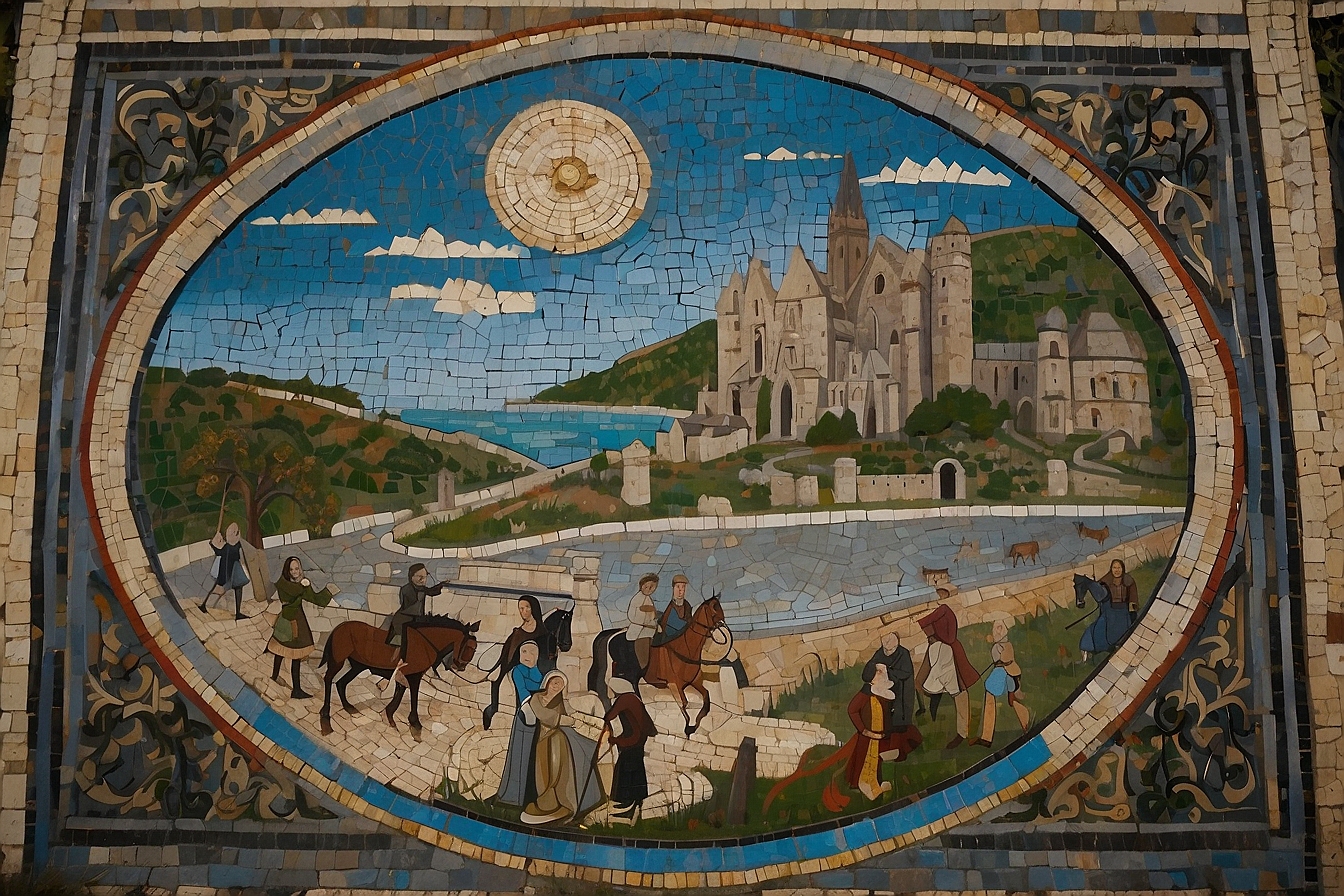
Updated On: April 15, 2024 by Fatma Mohamed
In our quest to preserve the rich tapestry of Irish heritage, we’ve embarked on an enchanting journey through the mists of time to bring you “Tell Us Your Favourite Tale: A Compilation of Reader-Submitted Irish Folklore.” This collective endeavour draws upon the shared memories and ancestral voices of our readers, each tale a thread in the vibrant weave of Ireland’s story. We delve into the emerald heart of folklore, where mythical creatures and spirited legends reside and where heroes and historic battles teem with lessons from the past.
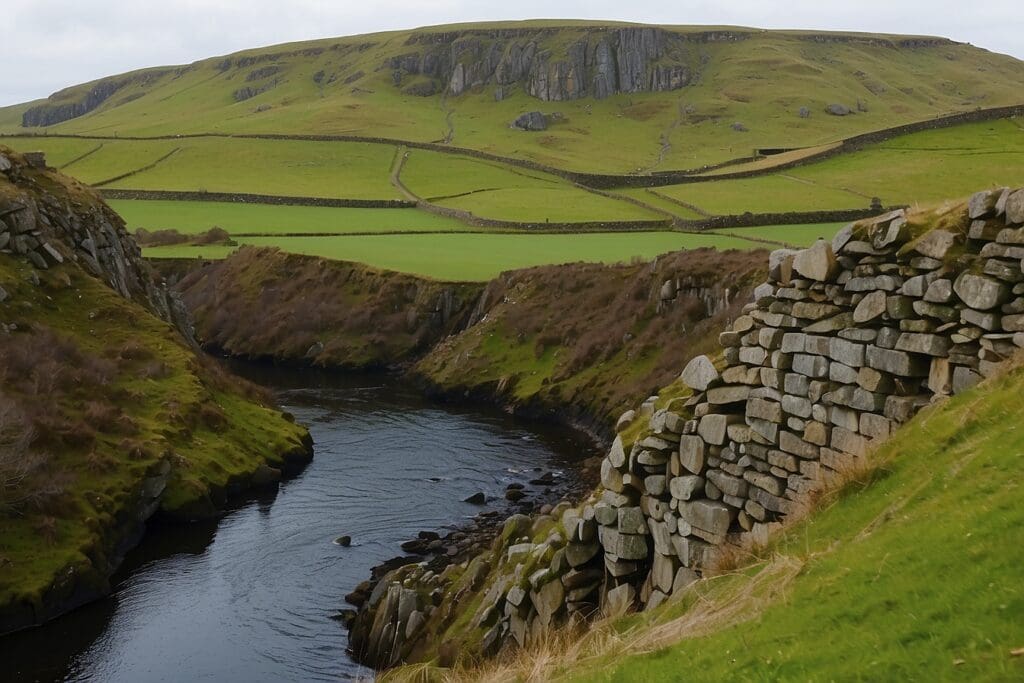
Through these stories, submitted by you, our readers, we uncover the essence of Irish folklore. From the haunted groves where legends whisper in the leaves to the hallowed traditions that have survived the ages, every submission is a reflection of Ireland’s soul. These tales of yore not only captivate with their narrative but also offer a glimpse into rituals and traditions, the moral fabric of folktales, and the enduring folklore in modern culture.
Table of Contents
Irish Heritage: The Origins of Irish Folklore
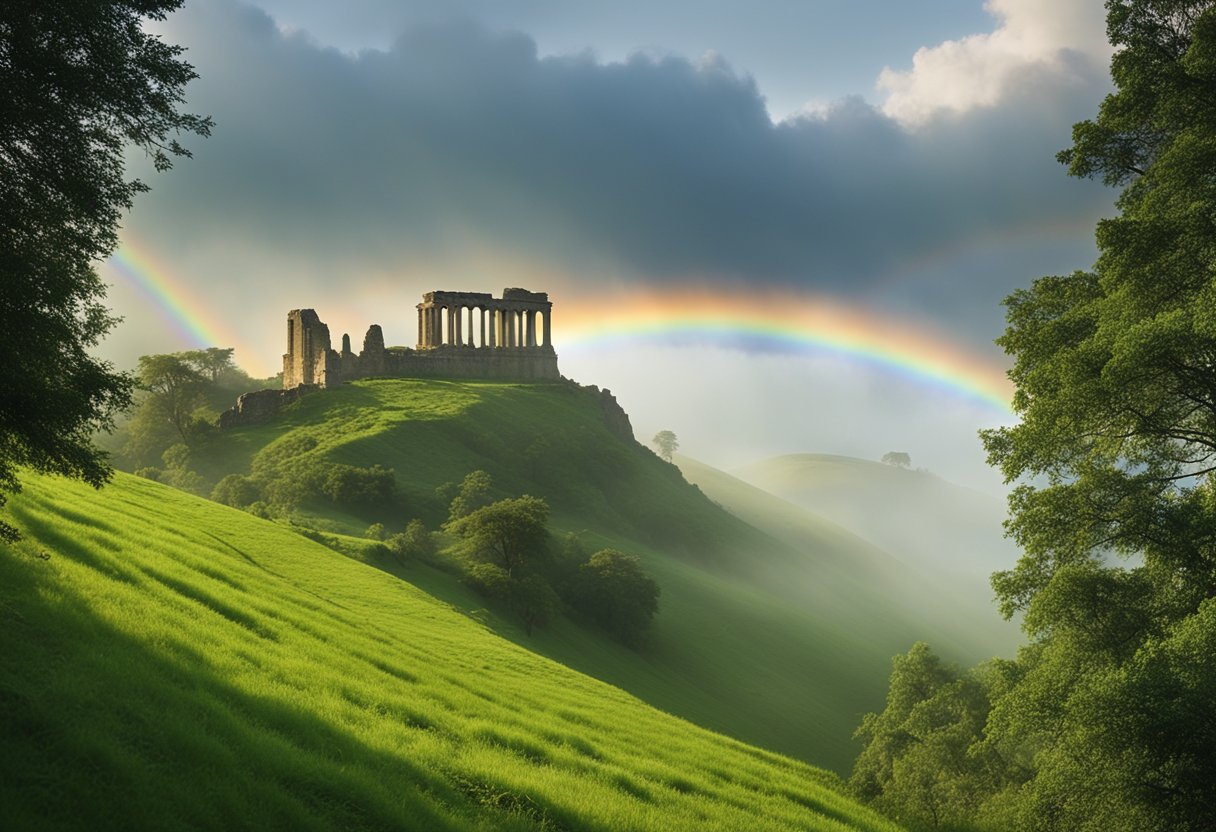
Irish folklore has a tapestry woven through centuries of oral tradition, connecting us with past generations who nurtured these tales. Our folklore is intrinsically tied to the land of Ireland, its history, and its people. It encompasses a rich variety of stories, myths, and legends that resonate with the heart of Irish culture.
Key Elements:
- Oral Tradition: Before literacy was widespread, stories were passed down verbally from one generation to the next. These tales often evolved over time, making them fluid and dynamic.
- Mythology: Irish mythology forms a significant part of our folklore, recounting tales of ancient deities and the otherworldly.
- Folktales and Legends: These stories are filled with moral lessons, often featuring familiar archetypes such as the hero, the trickster, and supernatural beings.
The communal aspect of storytelling was vital, with tales shared around the hearth, providing both entertainment and a sense of identity. Our traditions are rooted in paganism and later intertwined with Christian elements, reflecting a cultural tapestry that has evolved through deep history.
Historical Accounts: Our folklore dates back to the early Celtic civilization and is partly recorded in medieval manuscripts, such as the Book of Leinster and The Annals of the Four Masters. Irish mythology & folklore have been preserved through these texts, which provide a glimpse into our ancient past.
We must recognise these stories’ role in shaping our national identity and understanding our ancestors’ insights into life, nature, and the cosmos.
Mythical Creatures and Spirits
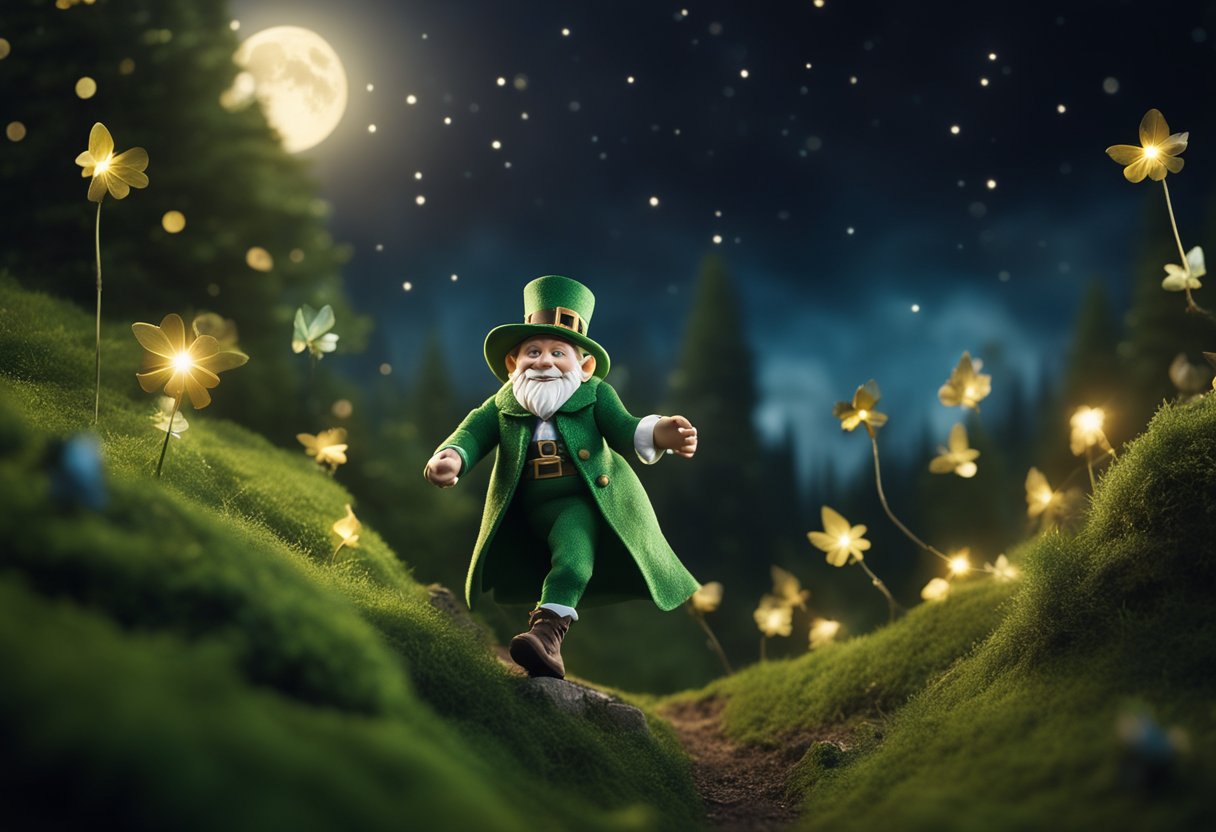
Irish folklore is rich with tales of enchanting entities, each with its own unique place in the tapestry of Celtic mythology. Let’s explore some of the most captivating figures that continue to ignite our imaginations.
The Aos Sí
The Aos Sí are a supernatural race akin to fairies or elves. Residing in the Otherworld, these beings are considered to be the remnants of ancient, pre-Christian Ireland’s deities and nature spirits. Stories of the Aos Sí or ‘people of the mounds’ detail their abodes in the sidhe (fairy mounds), where they are thought to live opulent and eternal lives, fiercely guarding their territories against human intrusion.
Banshees
Banshees, or bean sídhe, are spirit women whose mournful wails foretell death. As harbingers of doom, they’re believed to appear to families of pure Irish descent, and their cries serve as a chilling omen of an impending demise within the family. The banshee’s lament is rooted deeply in Irish family histories, with each banshee said to be keen exclusively for specific lineages.
Leprechauns
Leprechauns are perhaps the most globally recognised Irish mythical creatures. These solitary cobblers are typically depicted as mischievous old men dressed in green, known for safeguarding their pots of gold at the end of rainbows. These capricious fairies are clever and tricky; legend has it that catching one can grant you three wishes, but be wary, for they are also known to deceive.
Our collective fascination with these entities reflects an enduring love for storytelling that preserves the mystique and allure of Ireland’s ancient traditions.
Legendary Heroes and Figures
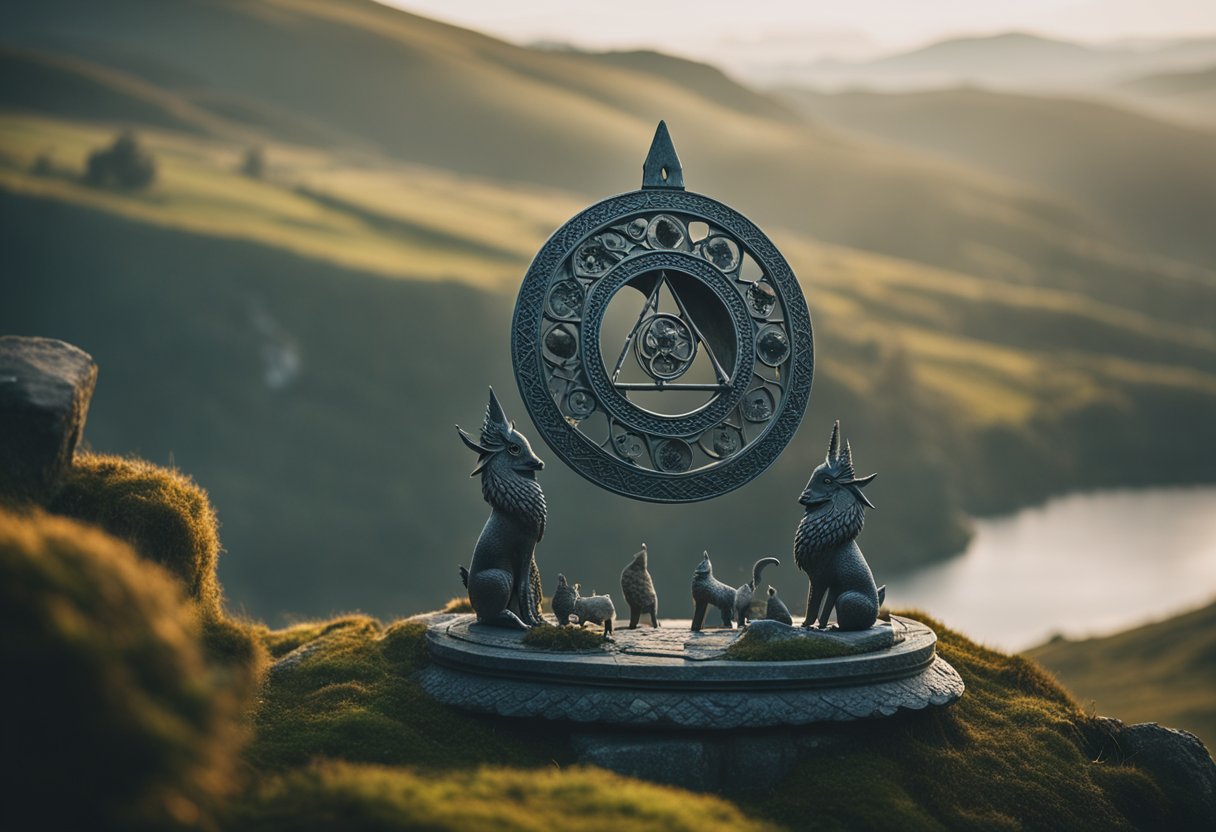
As we bring together stories from across Ireland, some of the most captivating revolve around the legendary heroes and figures that have shaped Irish folklore. These characters’ tales of bravery, adventure, and resilience have been recounted for generations, leaving indelible marks on our cultural identity.
Cú Chulainn
Often hailed as the greatest of Irish mythological heroes, Cú Chulainn’s exploits form a significant part of the Ulster Cycle. Known for his superhuman abilities and his tragic fate, his story is comparable to that of Achilles from Greek mythology. Cú Chulainn’s legacy as a mighty warrior continues to echo throughout Irish lore, his life story mingling courage with elements of love, loyalty, and tragedy.
Finn MacCool
Another figure of immense popularity, Finn MacCool, also known as Fionn mac Cumhaill, is central to the Fenian Cycle. A warrior of great repute, Finn is celebrated for his wisdom and leadership, which are just as legendary as his strength. Tales of his giant-sized deeds have been narrated across the lands, including the famous account of the creation of the Giant’s Causeway, a testament to his enduring impact on Irish stories and landscapes.
Grace O’Malley
Grace O’Malley, or Gráinne Mhaol, stands apart as a historical figure turned legend. A fearless leader and pirate from the 16th century, O’Malley is often referred to as the ‘Pirate Queen of Connacht’. She is celebrated for her naval prowess and her resistance against English rule, marking her as a unique and powerful presence in the annals of Irish history and folklore. Her life story exemplifies the spirit of independence and resilience that characterises so many of our folkloric narratives.
Historic Battles and Epic Sagas
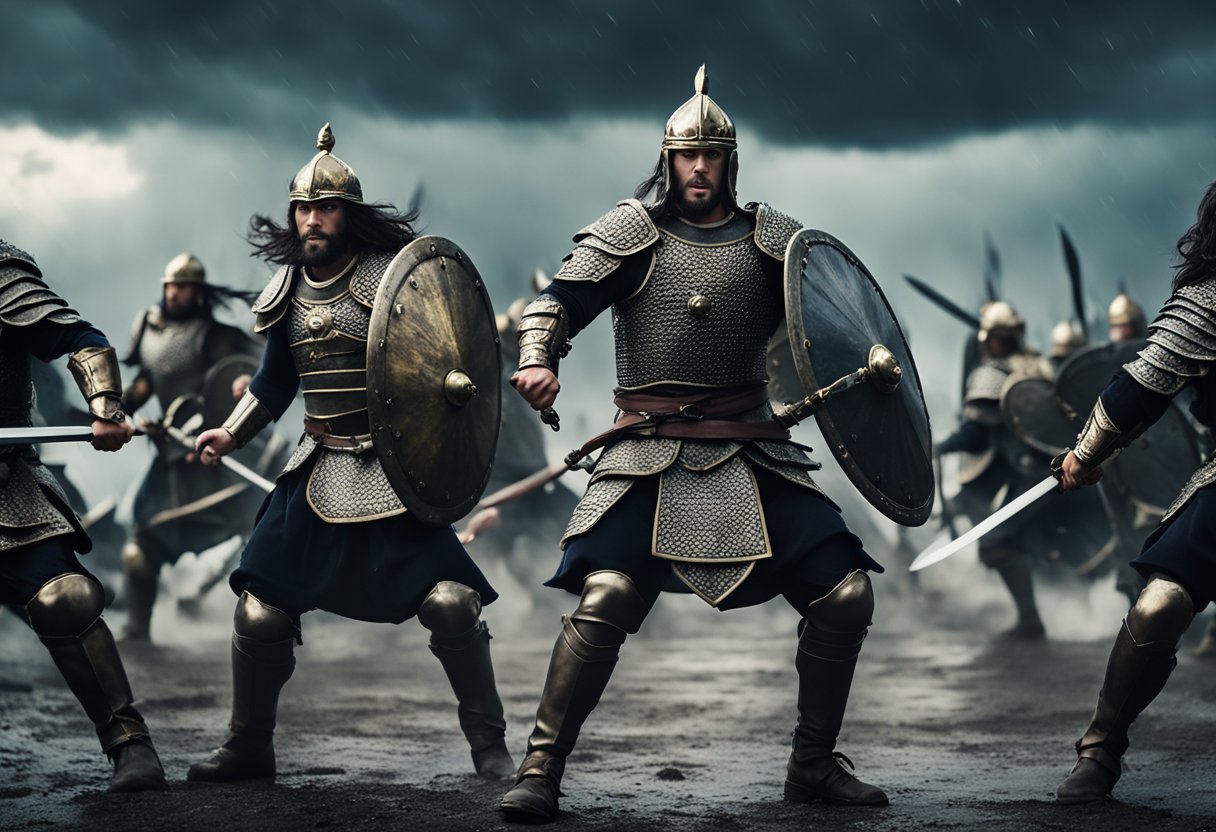
In the rich tapestry of Irish folklore, historic battles and epic sagas play a pivotal role, capturing the imagination and reflecting the fighting spirit of the Irish people through the ages. We delve into two iconic tales that have been passed down through generations, immortalising the valour and conflicts of yesteryear.
The Battle of Clontarf
Occurring on the 23rd of April, 1014, The Battle of Clontarf stands as a legendary event in Irish history. This was a fierce clash between the forces of Brian Boru, High King of Ireland, and a coalition of rebels and Viking invaders. Though Brian was slain, his forces triumphed, marking a critical moment in the struggle against Norse influence in Ireland.
The Cattle Raid of Cooley
Another monumental piece of Irish lore is The Cattle Raid of Cooley (Táin Bó Cúailnge), an epic tale from the Ulster Cycle of Irish mythology. This saga depicts the quest to capture the prized bull of Cooley, leading to a grand conflict drawing in heroes like Cú Chulainn and examining themes of honour, pride, and the tragic costs of war.
Sacred Sites and Their Legends
At the very heart of Irish folklore lie the sacred sites, each entwined with its own web of legends and myths that have been passed down through generations.
Hill of Tara
At the Hill of Tara, the ancient seat of the High Kings of Ireland, legends speak of mystical rites and powerful druids. This hallowed hill was the coronation place for the Kings and is associated with St. Patrick, who, as tales go, used it to confront the ancient religion of the pagans.
Newgrange
Newgrange, known for its remarkable Stone Age passage tomb, has stood in the Boyne Valley for over 5,000 years. This UNESCO World Heritage site is older than Stonehenge and intertwined with myths of the Tuatha Dé Danann, the mystical pre-Celtic inhabitants of Ireland.
Skellig Michael
Off the coast of Kerry lies Skellig Michael, a rugged island that monks chose for solitude in the 6th century. The beehive-shaped monastic cells and the treacherous ascents on the island are a testament to their devotion and a backdrop to legends of ancient warriors and saints.
Folktales and Their Morals
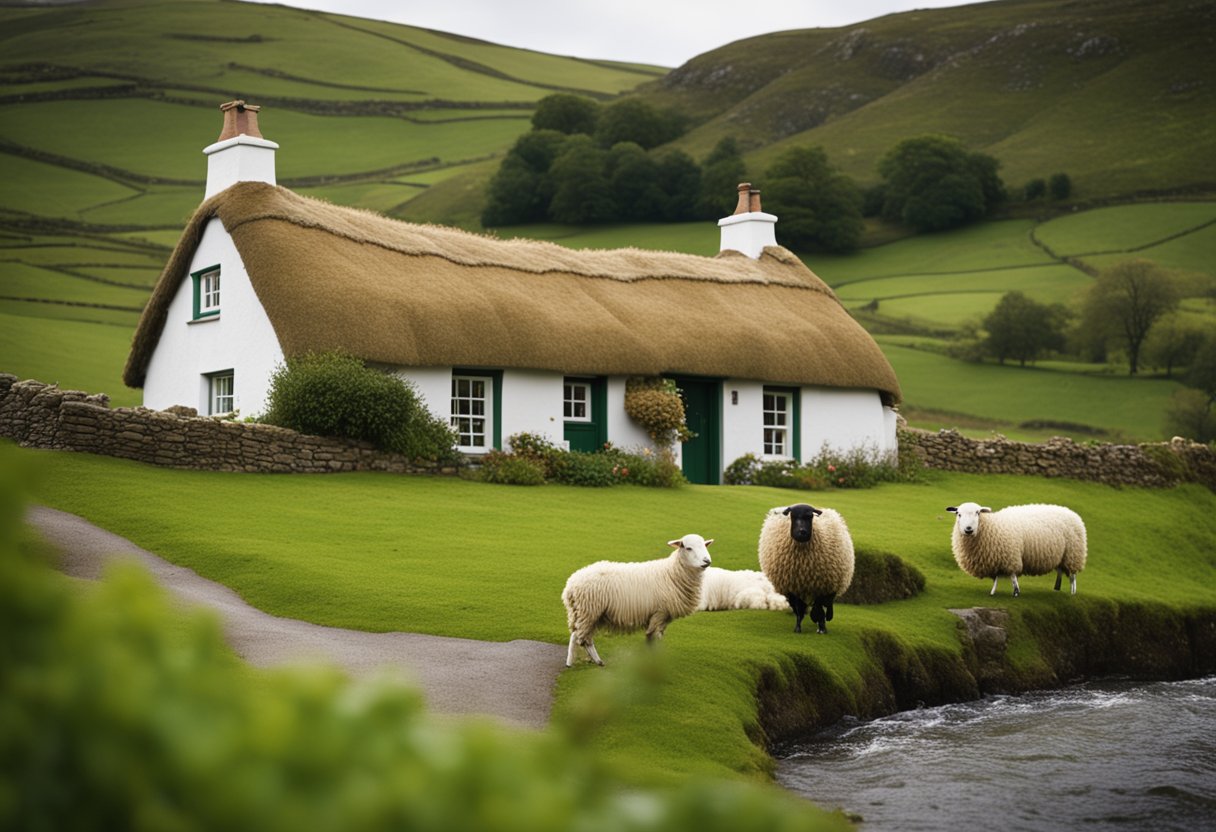
We explore the rich tapestry of Irish folklore, highlighting two beloved tales and the moral lessons they impart.
Children of Lir
The tale of the Children of Lir vividly illustrates the themes of love, loss, and transformation. A wicked stepmother, driven by jealousy, casts a spell, turning the four children of King Lir into swans for 900 years. Through their enduring love for each other and the eventual lifting of the curse, this story teaches the power of familial bonds and resilience in the face of adversity.
Oisín in Tír na nÓg
In the enchanting story of Oisín in Tír na nÓg, we learn about the allure of a promised perfect world and the longing for home and kinship. Oisín, a heroic figure of the Fianna, is taken to the Land of Youth by a beautiful fairy princess. Despite the land’s eternal beauty, Oisín yearns for his homeland. His eventual return represents the moral that no matter how enticing new experiences might be, one’s heritage and home hold an irreplaceable place in the heart.
Rituals and Traditions
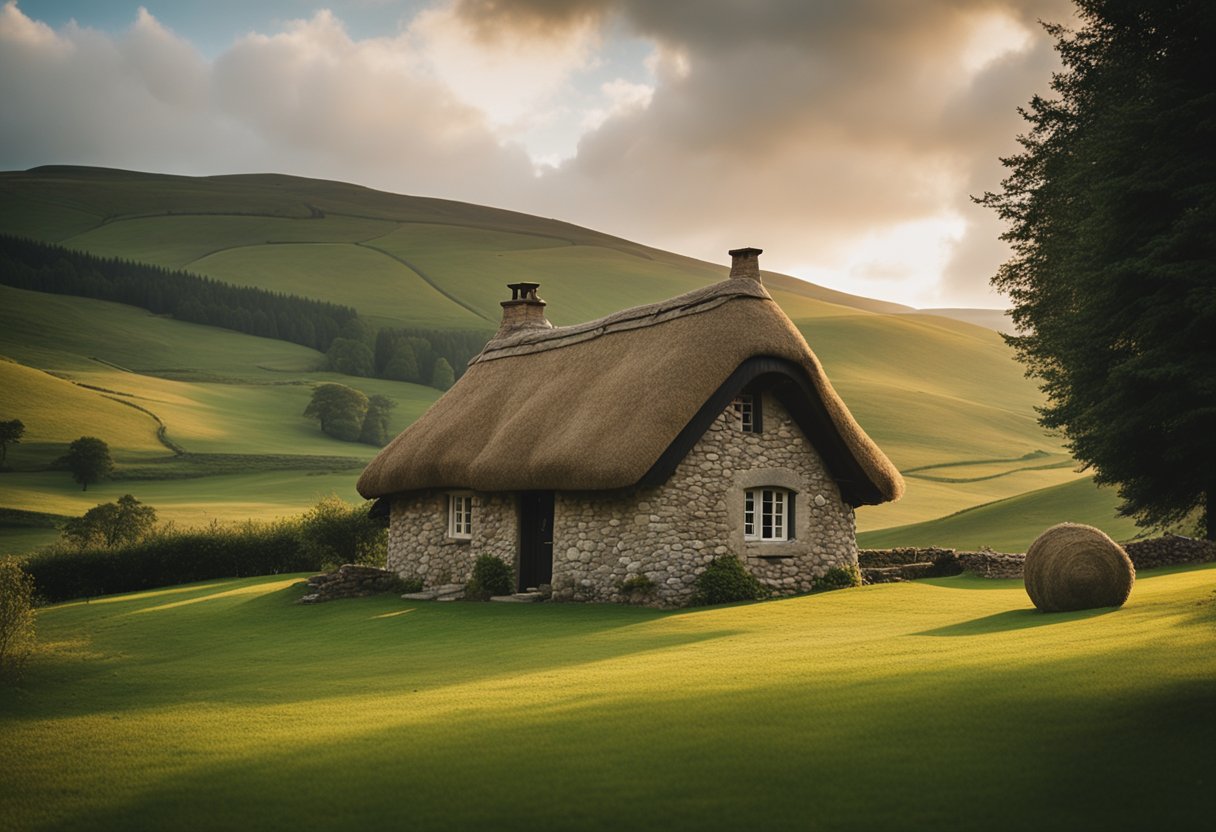
In Ireland, we are steeped in a tapestry of rituals and traditions that have been passed down through generations. These practices offer a glimpse into the spirit and story of our culture.
Samhain: This ancient Celtic festival marks the end of the harvest season and the onset of winter and is rooted in pagan origins. It’s believed that on this night, the barrier between our world and the spirit realm becomes thinnest. Modern Halloween celebrations can trace their roots back to these traditional Irish rituals that are still practised today.
Matchmaking: One quirky and enduring tradition is matchmaking. In rural Ireland, matchmakers played a vital role in ensuring the continuation of families and communities. Today, the Lisdoonvarna Matchmaking Festival continues this age-old custom annually, leading to thousands of marriages.
- Holy Wells: It is customary for us to visit holy wells, seeking healing and leaving offerings. Each well typically has a particular significance, often linked to a local saint.
- Fairy Trees: Irish folklore is rich with tales of the ‘Sidhe’, or fairy folk, and certain trees are considered their abodes. Disturbing these hallowed hawthorns is thought to bring bad luck.
- The Late Late Toy Show: A cherished holiday broadcast, this annual event has become synonymous with Irish Christmas traditions, with families gathering to watch together.
By sharing these elements of folklore with one another, we preserve a priceless part of our heritage, ensuring that such lore and customs are not lost to time.
Seasonal Festivities

In Irish folklore, the changing of seasons is marked by four distinct festivals, each with its own rich traditions and stories. These festivals not only signify the transition of the natural world but also blend myth and society, reflecting the ancient Celtic calendar.
Samhain
Samhain, pronounced sow-in, is traditionally held on the 31st of October. This festival heralds the beginning of the darker half of the year and is considered a time when the boundary between our world and the Otherworld becomes thin, allowing spirits and fairies to pass through. It’s a time for remembering ancestors, and some of the customs we’ve collected include lighting bonfires and enjoying feasts to ward off any mischievous spirits.
Imbolc
Imbolc marks the onset of spring, usually celebrated on the 1st of February. It’s associated with the goddess Brigid, who represents the home and hearth. Our readers have shared tales of lighting candles or making Brigid’s crosses from rushes or straw to celebrate the returning light and fertility to the land.
Beltane
Beltane falls on the 1st of May and is a joyous celebration of fertility and the burst of life that spring brings. We’ve gathered accounts of Maypoles being erected in villages and the rituals conducted to ensure prosperity. Bonfires, into which old belongings were thrown, were believed to protect homes and livestock.
Lughnasadh
Lughnasadh observed on the 1st of August, is the festival that starts the harvest season. Named after the sun god Lugh, it’s a time of fairs, markets, and gatherings. Our folklore submissions describe traditional handfasting ceremonies and the showing of skills in games and contests, all integral to this agricultural celebration.
Folk Healing and Herbal Lore
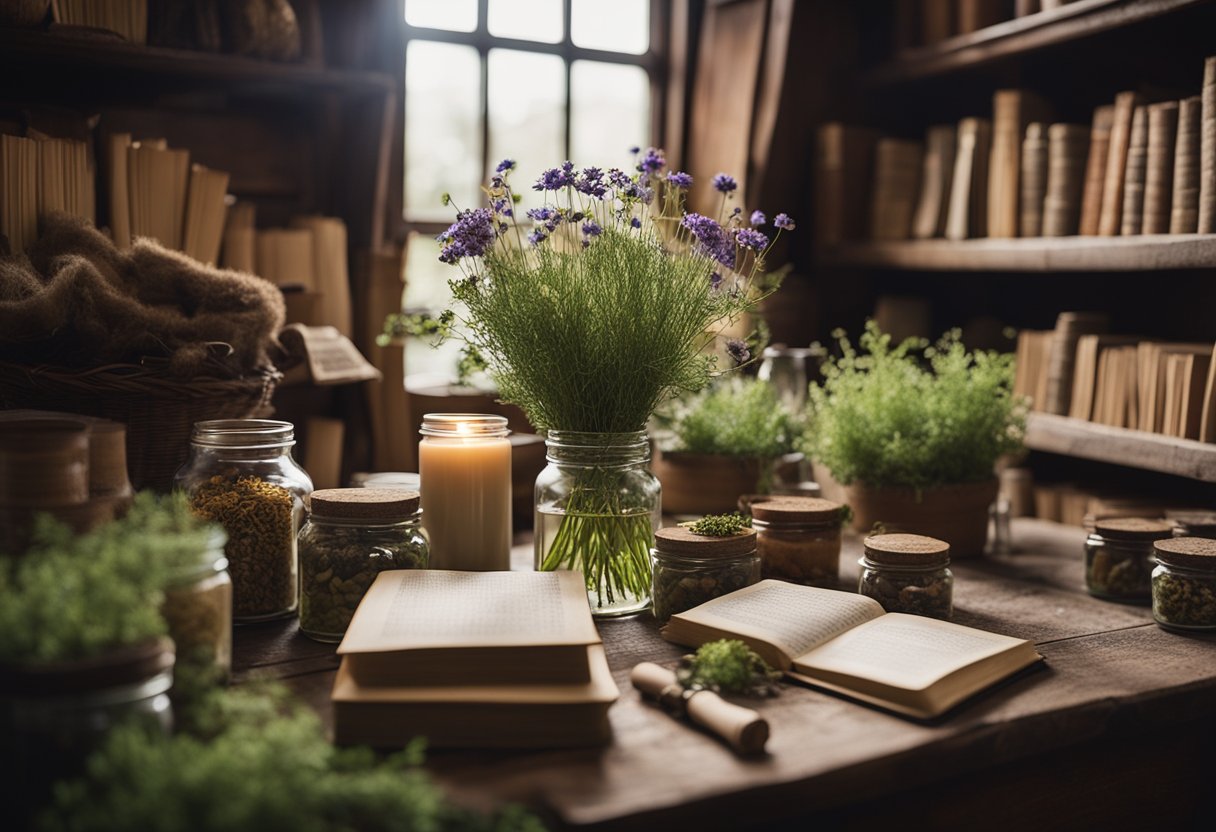
In the rich tapestry of Irish culture, we observe a deep-seated tradition of folk healing and herbal lore that has been handed down through generations. Herbal remedies and natural treatments were often the cornerstones of medical care, particularly in rural areas where access to conventional medicine was limited.
Herbal folk healing in Ireland intertwined plants and superstitions, where certain herbs were not only valued for their medicinal properties but also for the belief that they could ward off evil spirits or bring good fortune. Sage, for example, was often used for its perceived ability to protect and purify.
The Granny Women, traditional healers in Southern Appalachia, bear similarities to the Irish wise women who combined herbs with rituals. They played a central role in their communities, drawing on extensive knowledge of native plants for healing purposes. More about this can be found in the article on Southern Appalachian Women.
| Herb | Uses |
|---|---|
| Basil | Used in teas for digestion; believed to be precious to lovers in Italy. |
| Borage | I thought it would instil bravery and be used to treat fevers. |
In our collection of reader-submitted Irish folklore, we’ve uncovered tales where elderflower was picked for its potency in treating colds and nettle used to alleviate joint pain, demonstrating the enduring reliance on plants.
Traditional practices often included specific rituals, like cutting herbs at certain times of the day, to enhance their supposed efficacy. Such customs are part of the entwined nature of Ireland’s herbal lore and folk practices, reflecting a holistic approach to health that emphasises balance and harmony with nature.
Irish Folklore in Modern Culture
We can observe that Irish folklore remains a vibrant part of modern culture, continuing to influence various aspects of contemporary life. It is manifested through literature, film, and music, resonating with audiences globally.
In literature, authors frequently draw on the mythical creatures and legends of Irish lore to create compelling narratives. Stories of leprechauns, fairies, and banshees have transcended time, appearing in modern fantasy novels and children’s books, captivating new generations.
Cinema has also embraced these tales, with Irish folklore serving as the thematic backbone for movies and television series. These works often highlight the mythological heritage of Ireland, bringing it to life through visual storytelling. This allows a broader audience to connect with the folklore, irrespective of their background.
Music and performing arts are not exempt from this influence. Many contemporary Irish musicians integrate motifs from folklore into their songs and performances, which can be found echoing in venues from pubs to festivals.
Renowned celebrations like St. Patrick’s Day have helped in proliferating Irish folklore worldwide. The use of symbols such as the shamrock or the mention of the Celtic harp serves to reinforce the presence of these ancient stories and beliefs in present-day festivities.
Furthermore, the Irish Centre for Folklore and Mythology provides an educational platform for those interested in exploring these narratives in depth. It operates as a hub for research and sharing of Ireland’s rich folkloric heritage.
In summary, Irish folklore continues to be a significant and cherished component of modern culture, with its influence perceptible across various media and global festivities.
Frequently Asked Questions
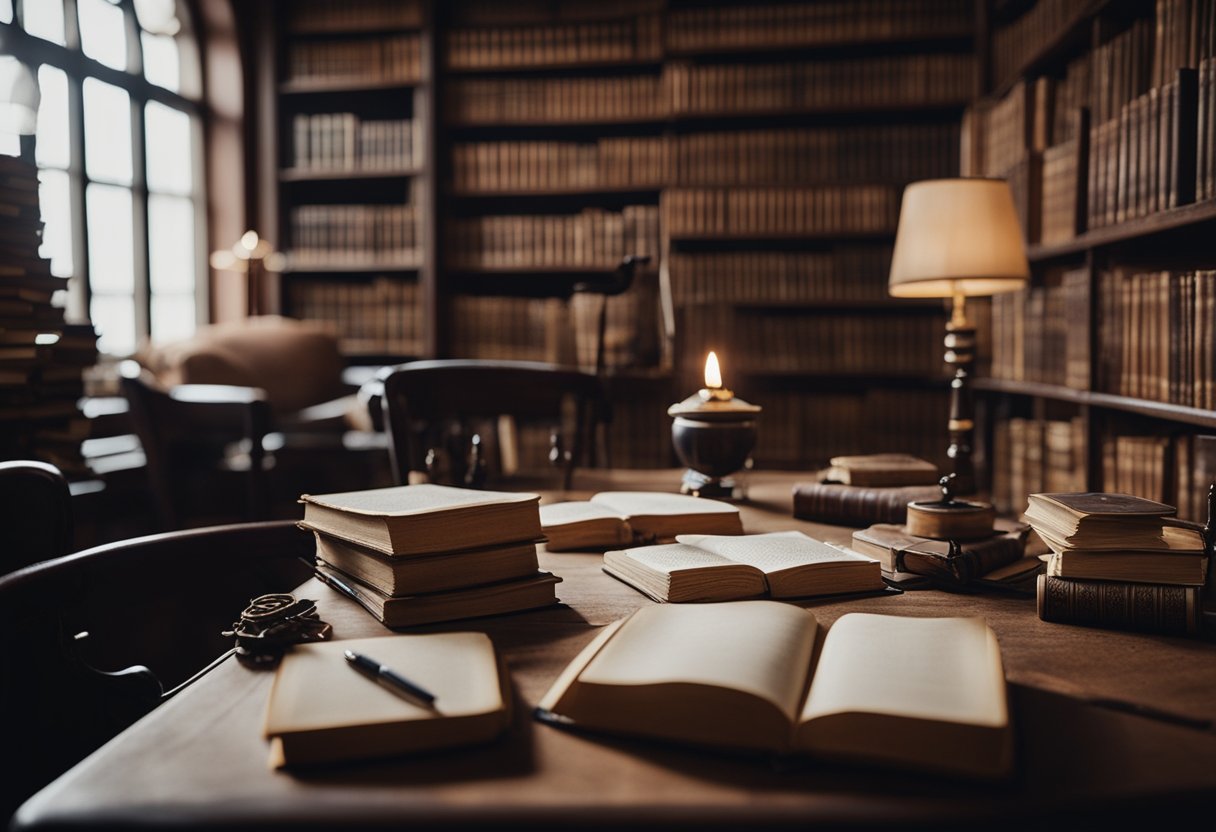
In this section, we’ve compiled a list of frequently asked questions to provide a deeper understanding of Irish folklore, its traditions, classifications, and significance. We’re here to help illuminate the rich tapestry that comprises the lore of the Emerald Isle.
What are some renowned Irish folktales?
Among the many storied pieces of Irish folklore, tales of leprechauns are perhaps the most famous. These little folk are significant in Irish mythology, often depicted as cobblers who possess hidden pots of gold. Other notable tales include the legend of the Children of Lir and the epic Táin Bó Cúailnge, often referred to as The Cattle Raid of Cooley.
How is Irish folklore traditionally categorised?
Irish folklore is traditionally categorised into several distinct categories. This includes the Mythological Cycle, Ulster Cycle, Fenian Cycle, and Historical Cycle. Each of these cycles contains a distinctive set of stories and characters that reflect different aspects of Celtic mythology.
What is the most ancient piece of Irish folklore known?
The most ancient piece of Irish folklore known is arguably the story of the Táin Bó Cúailnge, often considered to be dated back to the 8th century AD. It recounts the story of Connacht’s queen Medb and her husband Ailill’s campaign to steal the prized brown bull of Cooley from Ulster.
Why does Irish folklore hold significant cultural importance?
Irish folklore holds significant cultural importance as it embodies the nation’s history, philosophical beliefs, and artistic expressions. These tales have been shared through generations, preserving the collective memory and fostering a sense of identity among Irish people.
Can one access Irish folklore collections through digital formats?
Absolutely, one can access collections of Irish folklore through digital formats. Organizations and libraries have made concerted efforts to digitise archives to make this rich heritage available globally. For instance, the National Folklore Collection at University College Dublin offers an extensive digital catalogue of oral history accounts, legends, and customs.
Which publications serve as authoritative sources for Irish fairy tales and legends?
Publications by folklorists like W.B. Yeats have become authoritative sources for Irish fairy tales and legends. His compilations have served as a valuable resource for anyone interested in exploring the mythical and fantastical aspects of Ireland’s cultural past.


